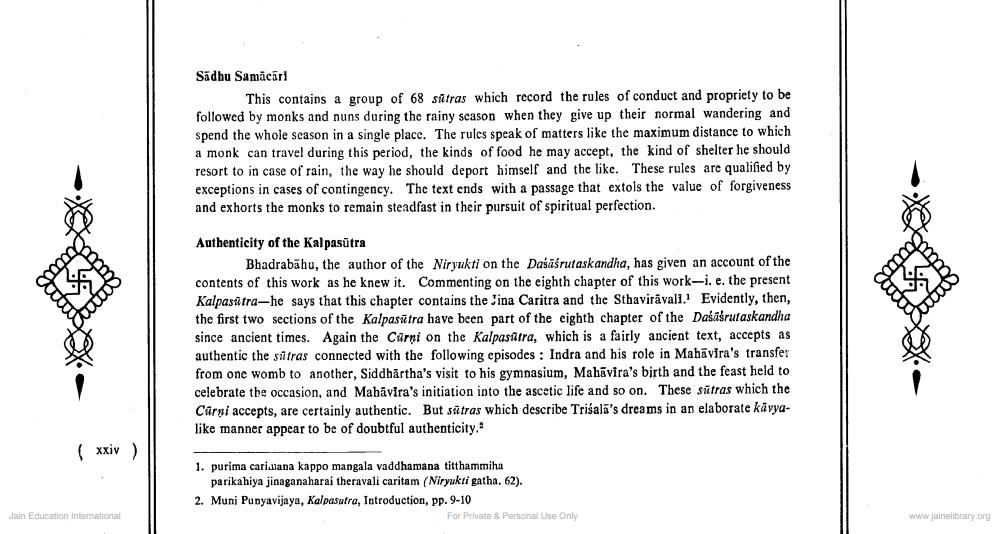________________
Sadhu Samācāri
This contains a group of 68 satras which record the rules of conduct and propriety to be followed by monks and nuns during the rainy season when they give up their normal wandering and spend the whole season in a single place. The rules speak of matters like the maximum distance to which a monk can travel during this period, the kinds of food he may accept the kind of shelter he should resort to in case of rain, the way he should deport himself and the like. These rules are qualified by exceptions in cases of contingency. The text ends with a passage that extols the value of forgiveness and exhorts the monks to remain steadfast in their pursuit of spiritual perfection.
Futus
Authenticity of the Kalpasūtra
Bhadrabāhu, the author of the Niryukti on the Daśāśrutaskandha, has given an account of the contents of this work as he knew it. Commenting on the eighth chapter of this work-i. e. the present Kalpasatra-he says that this chapter contains the Sina Caritra and the Sthavirāvali. Evidently, then, the first two sections of the Kalpasätra have been part of the eighth chapter of the Daśāśrutaskandha since ancient times. Again the Carni on the Kalpasūtra, which is a fairly ancient text, accepts as authentic the sätras connected with the following episodes : Indra and his role in Mahāvira's transfer from one womb to another, Siddhartha's visit to his gymnasium, Mahavira's birth and the feast held to celebrate the occasion, and Mabāvira's initiation into the ascetic life and so on. These sutras which the Carui accepts, are certainly authentic. But sitras which describe Trišala's dreams in an elaborate kavyalike manner appear to be of doubtful authenticity."
( xxiv)
1. purima caridana kappo mangala vaddhamana titthammiha
parikahiya jinaganaharai theravali caritam (Niryukti gatha. 62). 2. Muni Punyavijaya, Kalpasutra, Introduction, pp. 9-10
For Private & Personal Use Only
in Education International
www.jainelibrary.org




